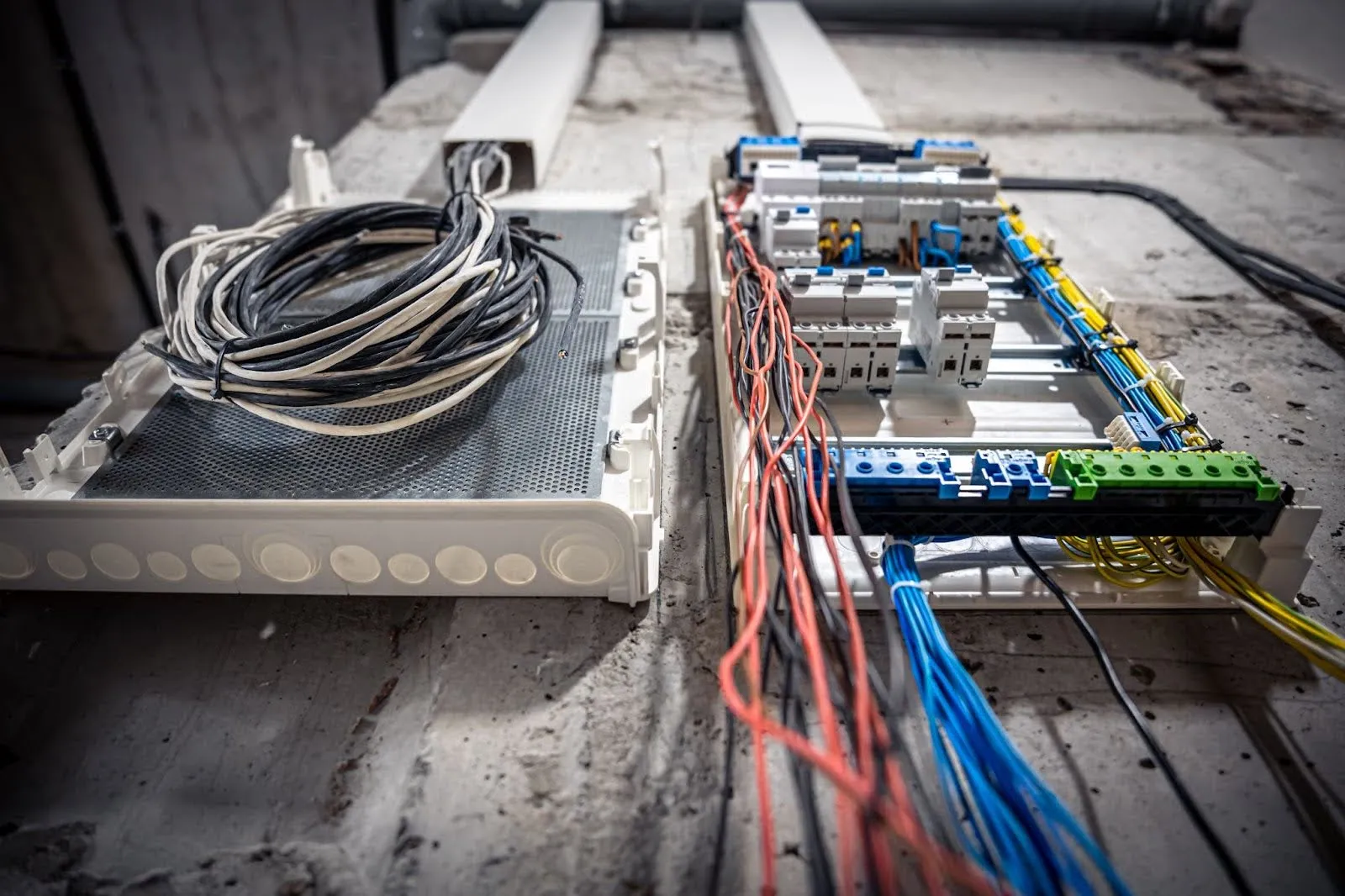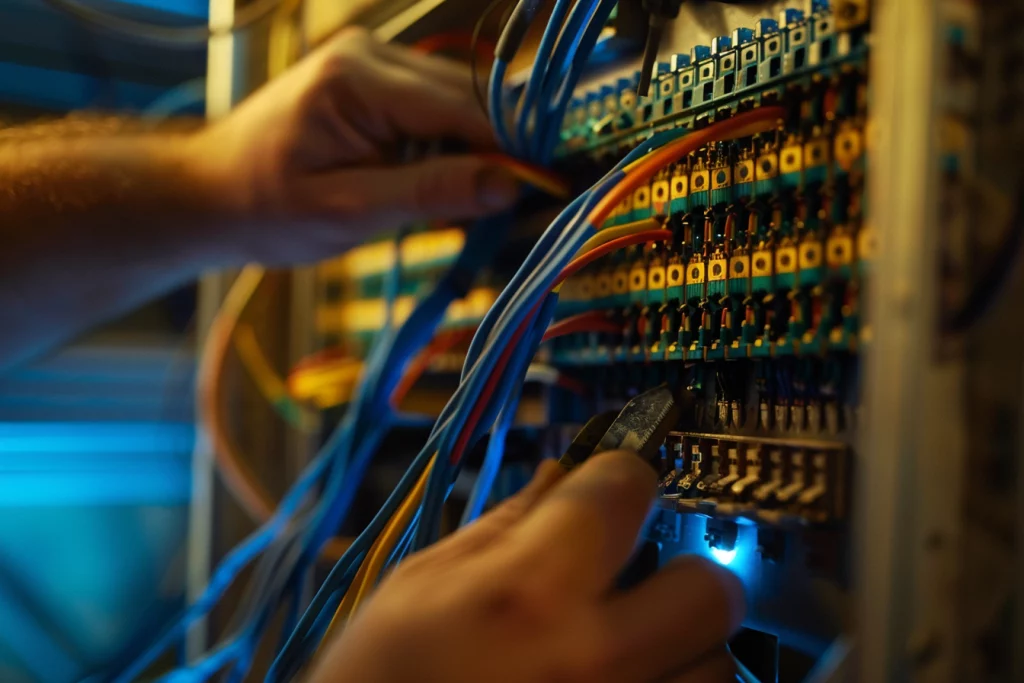
29 Jul What Is The White Wire In Electrical Wiring In Australia?

Have you ever wondered about the white wire in your home’s electrical system? While wiring colours might seem minor, understanding them can be crucial for safety and efficiency. In Australia, the wiring colour codes have undergone significant changes over the years, and knowing what each colour represents, especially the white wire, is essential for both homeowners and professionals.
The white wire typically serves as the neutral conductor in many electrical circuits. It has a critical role in completing the circuit by providing a return path to the ground, which is vital for the safe operation of the appliances and fixtures in your home. This neutral wire is often paired with live wires of different colours that carry the current from the power source.
Understanding the function and importance of the white wire and other wires in your electrical setup enhances safety and aids in troubleshooting and maintenance. Let’s dive deeper into the specifics of electrical wiring in Australia and demystify the role of the white wire.
Overview of Australian Wiring Color Codes
Electrical wiring colour codes in Australia have evolved to align with global standards. The current colour codes, introduced in 2018 under the AS/NZS 3000:2018 standard, are designed to ensure safety and compatibility with international systems. For single-phase wiring, the colours are
✓ Active (Live): Brown
✓ Neutral: Blue
✓ Earth: Green and Yellow
For three-phase wiring, the colours are:
✓ Phase 1: Brown
✓ Phase 2: Black
✓ Phase 3: Grey
✓ Neutral: Blue
✓ Earth: Green and Yellow
These standards make it easier to identify the function of each wire, reducing the risk of electrical hazards.
White Wire in Australian Electrical Wiring
Historically, the white wire was used as one of the phase wires in three-phase systems. Before 2018, the colour codes for three-phase wiring included:
✓ Phase 1: Red
✓ Phase 2: White
✓ Phase 3: Blue
✓ Neutral: Black
✓ Earth: Green
This historical context is important, especially for older buildings that may still use these colours. Understanding these old wiring codes helps maintain and upgrade electrical systems safely. Our residential electrician need to accurately identify the function of each wire to avoid potentially dangerous mistakes. For instance, misidentifying a white wire as a neutral or earth wire could lead to serious electrical hazards, including short circuits or electric shocks.
Additionally, it helps integrate new electrical installations with existing systems. When adding new circuits or upgrading old ones, knowing the historical colour coding allows for proper alignment with modern standards. This compatibility is crucial for maintaining the integrity and safety of the entire electrical system.
Lastly, homeowners and property managers can benefit from being aware of the old wiring standards, which can facilitate better communication with professional electricians. When everyone is on the same page regarding the wiring layout, the work is more efficient, and all safety protocols are followed.
Function of Different Wires

In any electrical system, each wire has a specific role:
✓ Active (Live) Wires: These carry the current from the power source to the outlet or appliance. In the current Australian standard, these wires are brown.
✓ Neutral Wires: These carry the current back to the power source, completing the circuit. The neutral wire is blue in the current standard.
✓ Earth Wires: These provide a path for electrical faults, preventing electric shocks. The earth wire is green and yellow.
Professional Insights
While understanding wiring colours is beneficial, electrical work should be left to professionals. Licensed electricians are trained to handle these tasks safely and know current and historical wiring standards. They can find potential hazards and ensure that all work complies with the latest regulations.
Steps to Ensure Electrical Safety
✓ Check Your Wiring: Regularly inspect your home’s wiring. If your house was built before 2018, it might still have the old wiring colours.
✓ Hire Professionals: Always engage licensed electricians for inspections, repairs, and upgrades. They have the expertise to handle any wiring issues safely.
✓ Avoid DIY Electrical Work: Electrical work is complex and dangerous. Unless you are fully qualified, leave it to the professionals to avoid risk of injury or damage.
✓ Stay Informed: Stay updated on the latest wiring standards and practices. This information helps you make well-informed decisions and communicate effectively with professionals.
Ensuring Safety and Compliance with Modern Electrical Wiring Standards
Understanding the wiring colour codes in Australia, especially the historical and current roles of the white wire, is essential for maintaining a safe and functional electrical system. As wiring standards evolve, staying informed and ensuring that your home or workplace adheres to the latest guidelines is crucial. This knowledge enhances safety and facilitates better communication with professional commercial electricians.
Always remember while understanding these codes is valuable, actual electrical work should be performed by licensed professionals. They possess the expertise to handle complexities and ensure compliance with safety standards. You can safeguard your property and avoid potential electrical hazards by prioritising professional intervention and staying informed.







Sorry, the comment form is closed at this time.